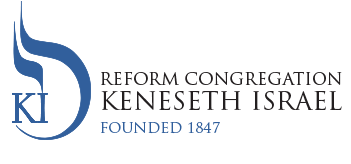Next Monday night, September 27 and Tuesday morning September 28, we will be celebrating the last of the Jewish Fall holidays together online. Following Reform tradition, we will celebrate Simchat Torah on Monday night and Shemini Atzeret-Yiskor on Tuesday. Observances will be online only, both for health reasons and to provide equal access to synagogue activities for all our members. I hope you will be joining us.
In thinking about the concluding Fall Holidays this year, I was reminded of the closing verse from Ecclesiastes 3, often used at funerals, beginning with “For everything there is a season” and including (in the middle of the passage), “a time to mourn and a time to dance.” The whole passage is constructed by coupling polar opposites in our human lifecycle beginning with “a time to be born and a time to die.” In this case, it is interesting that Ecclesiastes presents “mourning and dancing” as “opposites.” The former representing the depths of sadness in human experience, the latter, our highest expression of joy.
During both Rosh Hashanah and Yom Kippur, I gave several talks on the theme of “a time to mourn” and how it has shaped me as a congregational rabbi during the last four decades. Although we will be observing Yizkor on Tuesday morning, September 28, I thought for this week’s message, I would turn to the other end of the experiential spectrum, “a time to dance,” as the main focus of my remarks. Dancing and even more restrained choreography were once beyond the realm of Reform Judaism, which linked worship to a very formal cultural style. Today, the cultural norms in Reform Judaism and in culture are loosening and perhaps it is time for us, as a Reform synagogue, to think about the place of dance in our culture and what is possible at KI. We certainly see a great deal of Shabbat dancing at URJ biennial conventions. A hundred years ago, Jewish communities regularly held Masked Purim Balls and some singles groups to this day sponsor “Matza Balls!”
To contextualize my remarks, I want to begin with a reference from our general American culture. One of my favorite movies is Footloose, a 1984 film about a High School student who transfers from a big city to a small rural town in which there is a “moral” ban on dancing. The student, Ren McCormack, played by Kevin Bacon (great actor but bad name for a rabbi’s column), leads a protest to overturn the ban with the support of the local minister’s daughter. The minister, Rev Shaw Moore (played by John Lithgow) leads the opposition in the town to the repeal of the dance ban. With the help of Moore’s daughter, Ariel (played by Lori Singer), McCormack gives an impassioned speech proving that the Bible approves of dancing (e.g., David dancing before the Lord). Neither the minister nor the town board are swayed, so the students take their dance to the “other side of the tracks” in another town and hold a spirited dance. Observing from afar, the Minister, counseled by his wife, Vi (played by Dianne Wiest) realizes that “there is a time to mourn and a time to dance.”
Dance is an important part of Jewish life. There are required Horas at weddings and Bnai Mitzvah parties. Sometimes there is an athletic relative who can do a Kozachok or squat dance. JCCs and synagogues frequently offer Israeli folk dancing including the Debke and the Mayim Mayim dance. Curiously, the “Bottle Dance” from Fiddler on the Roof was essentially created for the American film version of the play, but has now become part of specialized wedding entertainment. Hasidism has a dance culture of its own. Then, of course, there are lots of American dances, mostly from early rock n’roll, country line dances and alike at our Jewish celebrations. Indeed, it is almost impossible to imagine celebrating in Jewish life without dance. As the good book says, “David danced before the Lord” and “Miriam danced with the women with a timbrel in her hand.” So, should we!
Shabbat Shalom, Hag Sameach, Gut Yontiff and “let’s dance!”
Rabbi Lance J. Sussman, Ph.D.
